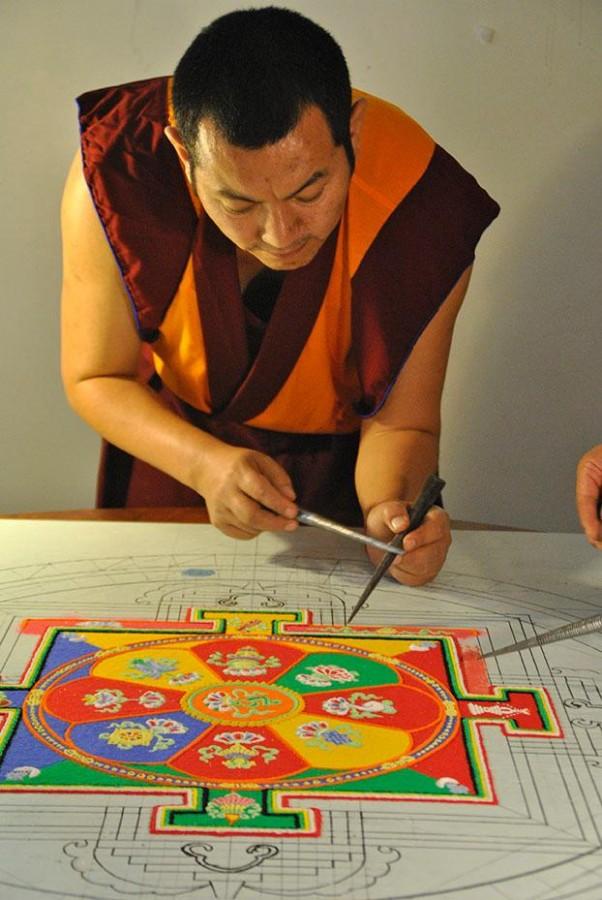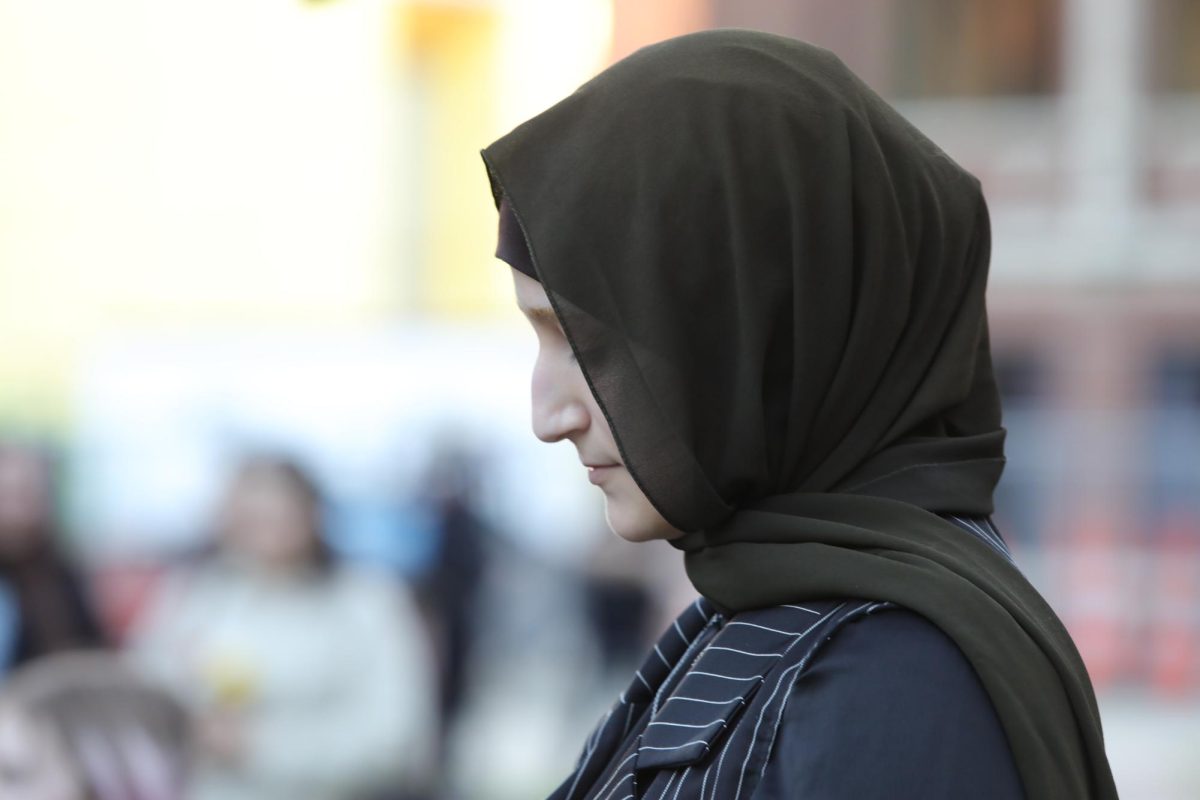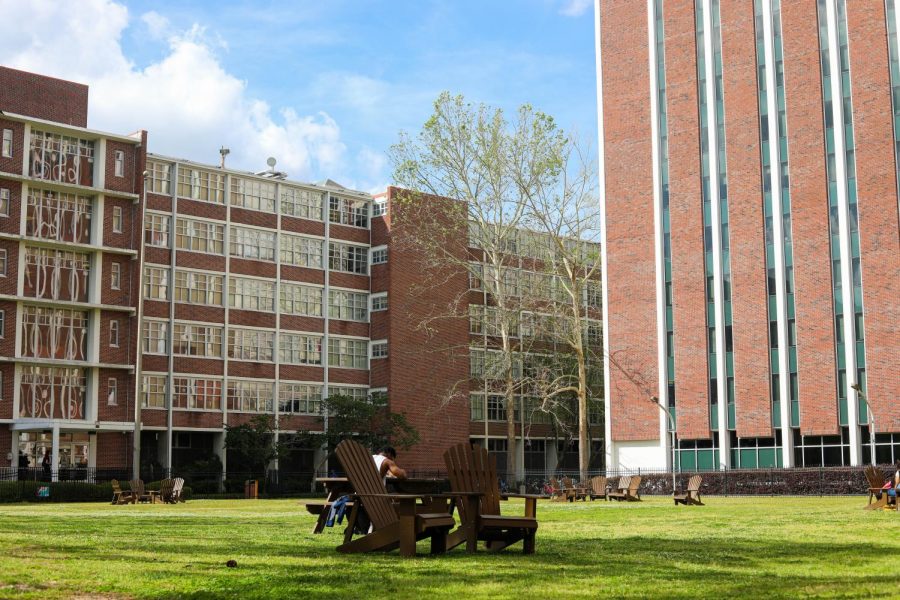Tibetan Buddhist monks from the Sera Je Monastery in Bylakuppe, South India, created art and music during their visit to Loyola from Tuesday, Nov. 12 to Thursday, Nov. 14.
The Sera Je monks are on a U.S. tour to perform sacred music and art as a way to raise awareness about the Sera Je Secondary School in India. The donations to, and the purchases from, the monks will go toward funding education and food for children at Sera Je.
Ngawang Legshe, adjunct professor at Tulane University and a former monk, said that the Sera Je Secondary School has integrated monastic education with modern education for the children. Legshe said it is the first of its kind in Tibetan history.
“The monks are trained not only in philosophy and Buddhism but also in teaching science, math, English and even Chinese among other modern subjects,” Legshe said.
Director of the Sera Je Secondary School Geshe Cobsang Dorji said that he became a monk at the age of 10.
“Buddhism is about teaching compassion and kindness,” Dorji said.
From Tuesday morning to Thursday night, the Sera Je monks created a sand mandala in the Danna Student Center. They also sold Tibetan items such as prayer flags and scarves, and they performed sacred Tibetan music during the opening and closing ceremonies.
The sand mandala is a Tibetan Buddhist tradition of drawing a sacred design with marble that has been colored and ground into sand. The mandala is used as a base for meditation to spread blessings and inspirations.
Whitney Stewart, adjunct lecturer at Tulane University, said that this sand mandala was of the Green Tara, the female emanation of the Buddha of compassion.
“The monks are generating compassion for all those who pass by and see this mandala, and for Loyola, and they are also generating for all sentient beings,” Stewart said.
Stewart explained that every aspect of the mandala has a symbolic meaning. Nothing is arbitrary and its deconstruction at the closing ceremony on Thursday night “represents the impermanence of life.”
The monks distributed sand from the mandala as a blessing to attendees of the closing ceremony that took place in Nunemaker Auditorium on Thursday night.
Following the ceremony the monks brought the remaining sand to Audubon Park and poured the sand into a lagoon “as a way to share the compassion with animals,” Stewart said.
Legshe explained that the dire situation in Tibet prevents most Tibetan children from receiving proper education.
“We are trying to create the best of the best Tibetan students and one of the goals in visiting is to raise awareness about the dire situation in Tibet and even beyond that, to raise awareness about the free education we are giving to Tibetans and willing Buddhists practitioners,” Legshe said.
The Sere Je secondary school gives free education, free food and free housing to students and monks. According to Dorji, there are over 700 novice students and monks currently at the school.
“The combination of traditional and modern education lets the children decide how they can integrate compassion and love for sentient beings into their professional lives,” Dorji said through a translator.
The department of music industry studies, the department of theatre arts and dance, the office of Mission and Ministry, and the department of religious studies solicited the monks’ presence at Loyola.













